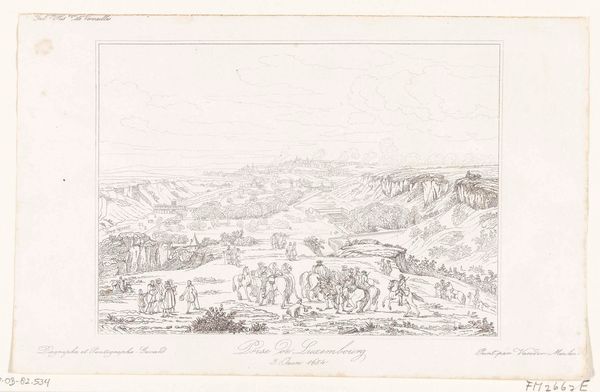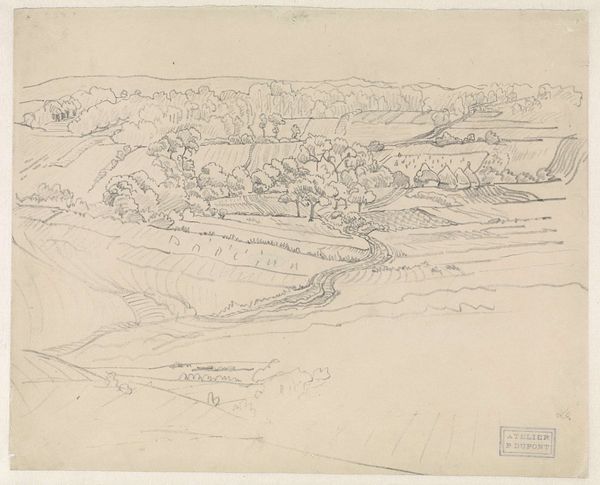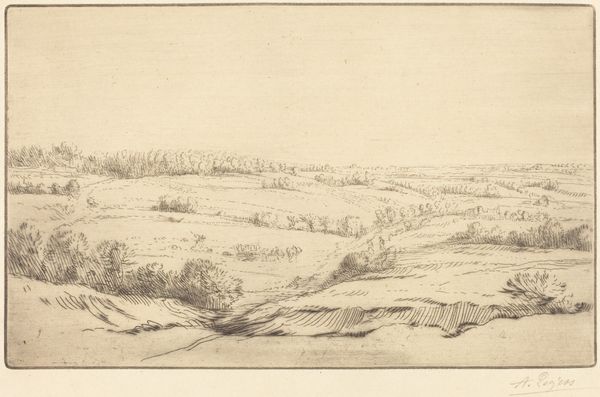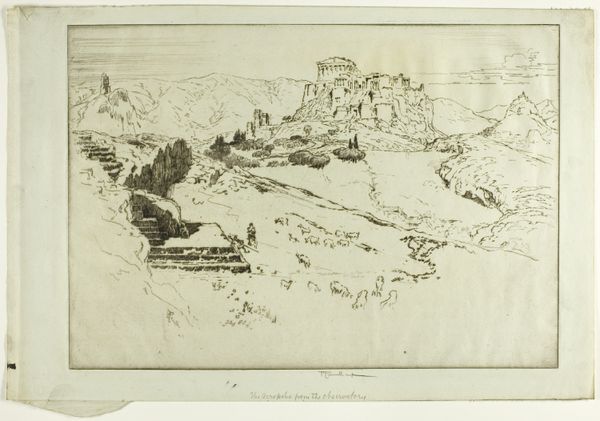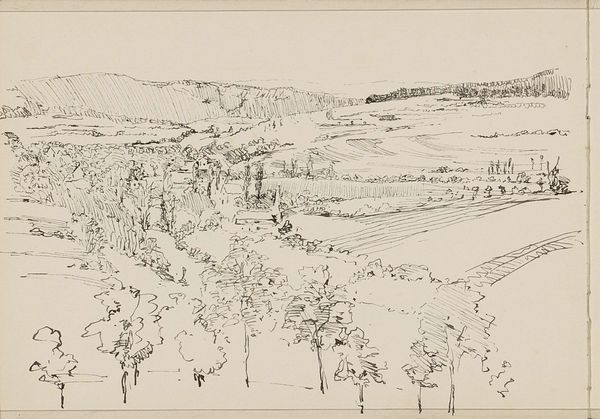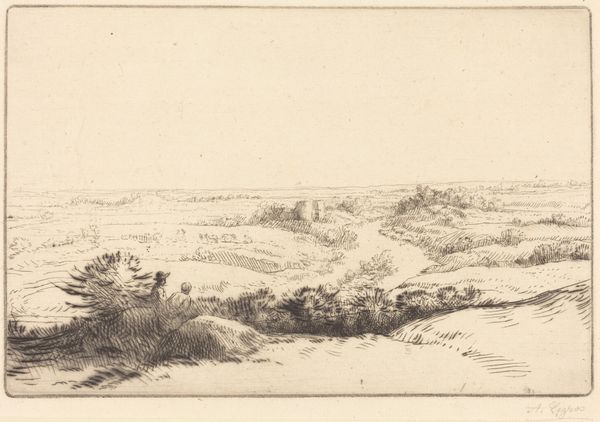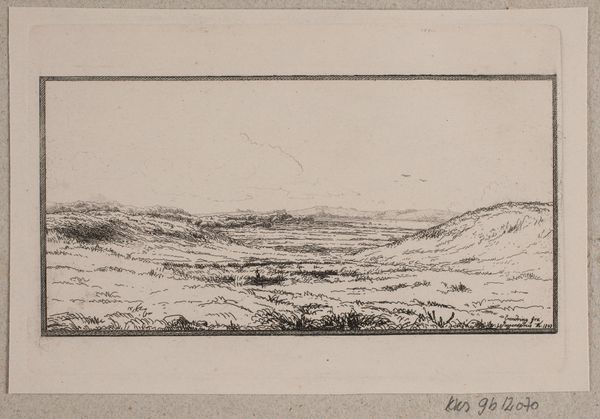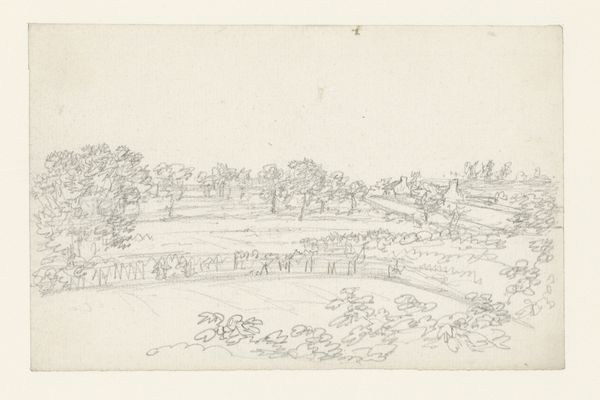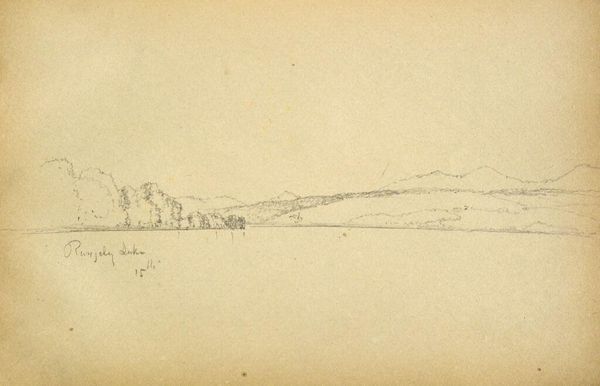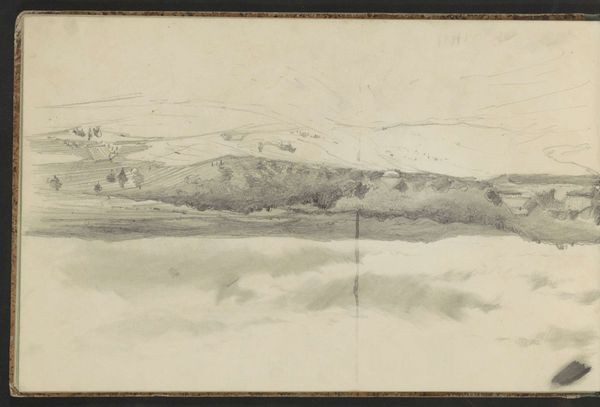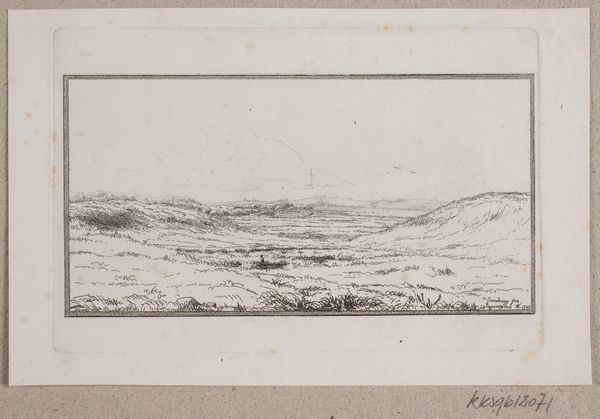
drawing, etching, pencil
#
drawing
#
impressionism
#
etching
#
landscape
#
sketch
#
pen-ink sketch
#
pencil
#
sketchbook drawing
#
realism
Copyright: Public domain
Editor: So, this is James Tissot's "The Tombs in the Valley of Hinnom," created in 1889. It appears to be a drawing, perhaps an etching, and the detail is really striking. The landscape feels almost...engineered, built. What's your perspective on this work? Curator: My eye is immediately drawn to the *means* of representation. Tissot chooses etching, a reproducible medium, to depict this site. Think about that: the tombs, traditionally spaces of burial and commemoration, are here subjects of a process of reproduction. Etching involves labor – the artist's hand scoring the plate, the acid biting into the metal, the printing process itself. Editor: That's fascinating. So, it’s not just *what* is depicted, but how it's being made, and then remade. Curator: Precisely. Consider the valley itself – the title tells us it's the Valley of Hinnom, a place associated with historical and religious significance, of both sacrifice and idolatry. But what about the labor involved in transforming this valley into tombs? The physical work of quarrying the stone, building the structures? And who did that labor? Whose stories aren't told here? Editor: It makes me think about how we often overlook the material realities behind even seemingly spiritual sites. Curator: Absolutely. And the choice of a drawing, which can be replicated as an etching. It implies a consumption, almost, of the imagery itself. Tissot isn’t just presenting a view; he’s presenting a commodity. What’s your feeling about that, the relationship to commercial value in this choice? Editor: I hadn’t considered that element of production at all, and it's amazing to think about labor and how we consume imagery of these biblical scenes. Curator: The etching, in this instance, invites us to critically look past the traditional art interpretation. This type of methodology allows us to think of the wider context in which an artwork comes into being and how this can speak to history, consumption, and social value.
Comments
No comments
Be the first to comment and join the conversation on the ultimate creative platform.
